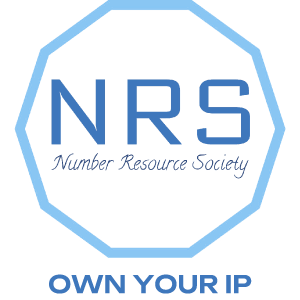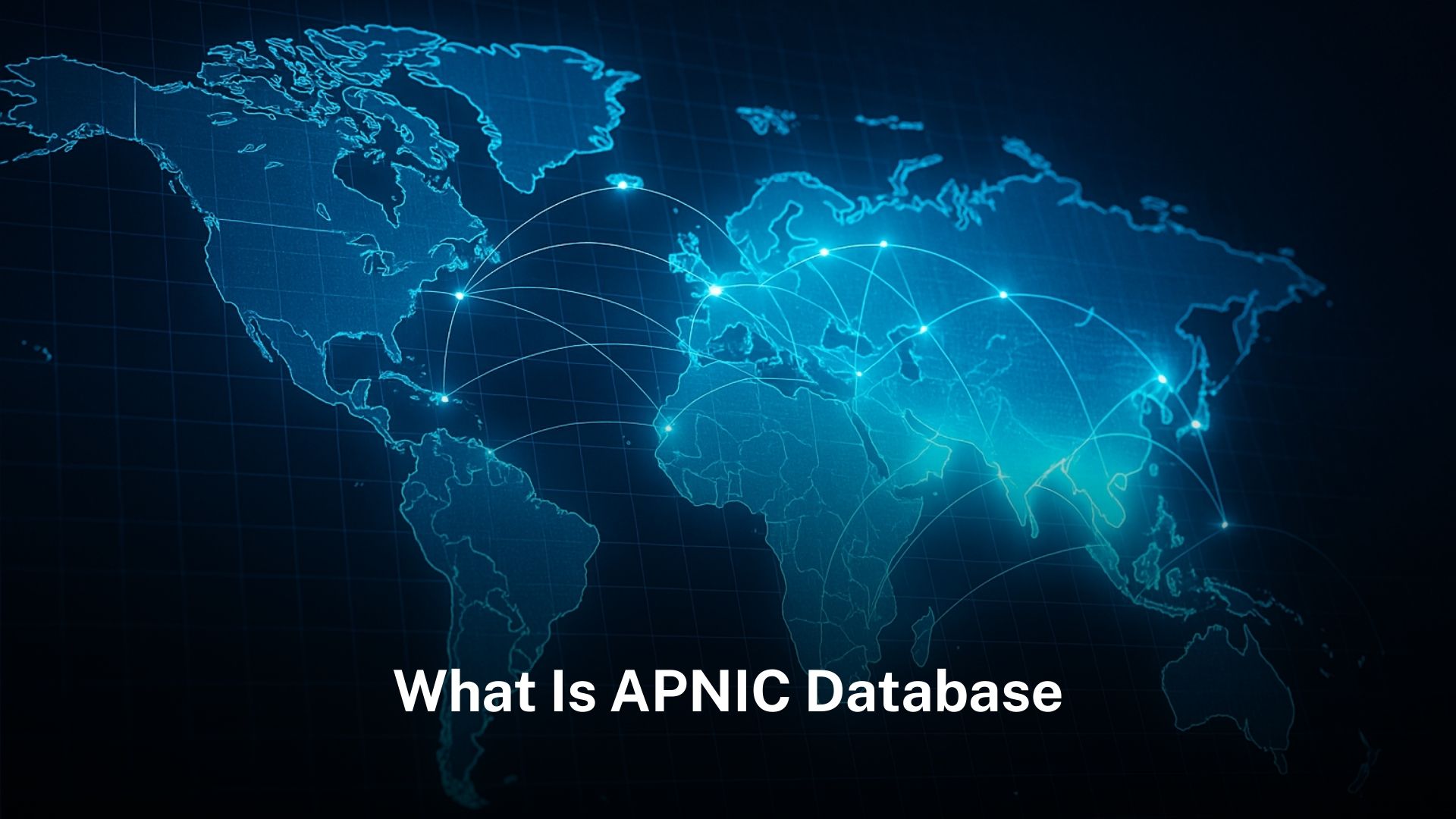Introduction to APNIC and Its Role
The Regional Internet Registry (RIR) in charge of providing and monitoring IP addresses and ASNs in the Asia Pacific region is the Asia Pacific Network Information Centre (APNIC). By making sure an equitable allocation of internet resources while offering a selection of services to its members, APNIC, which established itself in 1993, builds the stable and secure operation of the internet. The APNIC Whois Database, a publicly available registry that maintains the movement and assignment of IP addresses and ASNs in the area, is one of its initial services. For network operators, researchers, and safety specialists who need solid data about digital assets, this database is an important resource.
IP address ranges (inetnum and inet6num), AS numbers (aut-num), routing policies (route and route6), reverse DNS delegations (domain), and network information about individuals (person and role) constitute the wide range of records, or “objects,” that are available in the APNIC Whois Database. Several operational tasks, including handling networking issues, applying routing policies into place, as well as investigating into network abuse, depend upon these records. APNIC helps overall stability, security, and receptivity of the internet infrastructure in Asia-Pacific region by upholding and which gave access to this vast database.
Accessing the APNIC Whois Database
The APNIC Whois Database makes it simple to access and provide plenty of ways to meet the needs of various users. The APNIC website’s web-based Whois search tool is the principal procedure. Users can enter IP addresses, AS numbers, or other identifiers to search for information through this apparent interface. The search results offer exhaustive information about the resource that was looked up for, such as contact details, related organisations, and allocation details. Network operators, researchers, and individuals searching for specific information about internet resources in the Asia Pacific area will locate this tool especially useful.
For more experienced users, APNIC supplies command-line access to the Whois Database utilising the whois protocol. Users can automate and translate whois.apnic.net into network management workflows by conducting searches directly from their terminal or scripts. Further, under an Acceptable Use Policy, APNIC provide bulk access to the Whois data. This makes it achievable for researchers and companies to download sizable datasets for planning, monitoring, or analysis. In order make sure that the data is used responsibly and ethically, bulk access is subject to approval and is intended exclusively for in effect operational and research functions.
Importance of the Whois Database
The Asia Pacific region’s internet security and operational integrity are significantly enhanced by the APNIC Whois Database. Creating network troubleshooting is one of its essential functions. Operators can use the Whois Database to find the organisations responsible for maintaining for particular AS numbers or IP address ranges when network-related issues occur. Through the use of this information, they can rapidly fix problems by getting in correspondence with the right individuals decrease downtime and maintaining intuitive network operations. Discovering the parties who are responsible would be far more challenging and lengthy in the absence of such a consolidated readily accessible resource.
The Whois Database has an essential role in boosting cybersecurity initiatives in between supplying operational support. The database assists in tracking and avoiding malicious activities like sending emails, Distributed Denial of Service (DDoS) attacks, and other types of network abuse through supplying transparent records of IP address allocations and ASNs. Researchers in security have the skills to identify the cause of malicious traffic, update suitable organisations of incidents, and work close in creating countermeasures. The Whois Database is a critical instrument for both operational and safety objectives because of the vitality of that level of accountability and transparency in conserving trust and protection in the internet infrastructure.
Maintaining Accurate Whois Records
For the APNIC Whois Database to be reliable and effective, records must be kept current and accurate. Companies that own AS numbers or IP addresses are in charge of making sure that the data in their Whois records is up to date. This entails registering routing policies, updating contact information, and taking into account modifications to network infrastructure. Accurate records support many kinds of operational tasks, promote immediate issue resolution, and facilitate efficient network management. The MyAPNIC portal serves as one of the tools and resources that APNIC gives for assisting members safely and successfully handle and update their Whois records.
Members can use the Whois Updates feature to add new objects or evolution existing ones in their records by recording into the MyAPNIC portal. Furthermore, APNIC supplies helps to members to preserve accurate documents through its documentation and Helpdesk. Reviewing and updating Whois data on regularly encourages compliance with rules, prevents miscommunications, and encourages the overall security and well-being of the internet infrastructure. Organisations give greatly to maintaining the reliability as well as confidentiality of the Whois Database by acknowledging transparency for their records.
Challenges and Considerations
In spite of its import, the APNIC Whois Database has a variety of difficulties that influence its accuracy and effectiveness. Making certain the data is reliable and complete is one of the main challenges. Since the numerous businesses are in responsible for updating their records, shortcomings and outdated facts are possible, which might trigger difficulties with network security and operation. In order to tackle this, APNIC hires a range of techniques, which includes frequent inspections, automated tools, and outreach to the public, to encourage and allow its members to keep current records.
Discovering an appropriate equilibrium across privacy and transparency is a further challenge. Openly accessible information from the Whois Database can be valuable for security and operational requirements. It also raises concerns about the openness of organisation and personal contact data, which might end in harm or unauthorised solicitations. By applying security measures in place, involving a capacity to redact sensitive data when needed and the introduction of avenues for users to report errors or privacy concerns, APNIC decreases such concerns. The purpose of those efforts is to uphold the Whois Database’s usefulness while securing people’s and organisations’ privacy.
The Future of the Whois Database
The APNIC Whois Database is set to change in future years in response to the developing requirements for the global web community. Boosting the database’s the features to handle the growing popularity of IPv6 is one area of importance. A powerful and scalable Whois database grows necessary as the Asia Pacific region continues to see immense internet growth. To deal with the growing amount and complexity of internet resources, APNIC has invested assets in upgrades to the infrastructure, such as transforming database systems and adding new technologies.
Furthermore, APNIC is investigating methods to enhance the Whois Database’s accessibility and usability. In an effort to improve network operators’ and researchers’ workflows, this involves enhanced search abilities, requesting more complete and established information, and integrating the database with other tools and services. The Whois Database is going to stay to be an efficient and helpful tool for managing internet resources and supporting in ensuring the secure and efficient functioning of the internet in the Asia Pacific region by APNIC’s ongoing adjustment to user needs and technological advancements.
Frequently Asked Questions (FAQs)
1. What is the APNIC Whois Database?
It is a public registry showing which organizations hold IP addresses and AS numbers in the Asia Pacific region.
2. How can I access it?
You can use the web Whois search on APNIC’s site, the command-line tool whois.apnic.net, or request bulk access for analysis.
3. Who updates the records?
Organizations holding IPs or ASNs are responsible for keeping their details current using the MyAPNIC portal.
4. What information does it contain?
It includes IP allocations, AS numbers, routing policies, reverse DNS, and technical contact details.
5. Can the data be misused?
The data is for operational and research purposes only. Using it for marketing or spam is prohibited.




Absolutely written subject matter, thankyou for information .
Greetings! Very helpful advice on this article! It is the little changes that make the biggest changes. Thanks a lot for sharing!